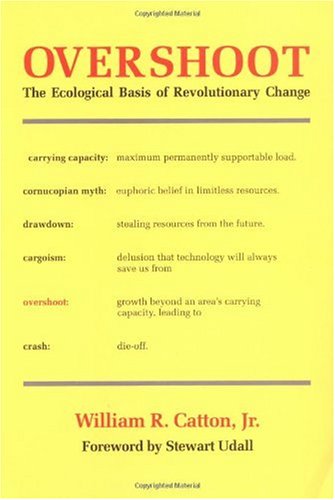The following are excerpts from, "Smartphones Undermine Social Connections More in Men Than Women: A Mini Mega-Analysis", November 17, 2023, published in Technology, Mind, and Behavior, Vol. 5, Issue 1, Spring, 2024.
ABSTRACT
Though smartphones have been shown to undermine well-being and social connection, evidence also suggests that these effects depend on when and how people use their phones. To examine whether the effects of phones on well-being (affect valence) and social connection depend on the situation, we compiled data across eight published and unpublished experiments where phone use was manipulated (N = 1,778). These experiments included situations ranging from parents visiting a science museum with their children, eating a meal with a group of strangers, to looking for an unfamiliar building. We found that phones have a significant negative impact on people’s feelings of social connectedness across situations. The impact of phones on well-being, however, depended on the situation: Phones negatively impacted well-being when used during ongoing social interactions, but not when used to find information relevant to current goals. Our large data set also allowed us to examine whether the effects of phones depend on individual differences. We found that gender moderated the effects of phones on social connectedness, whereby phones negatively impacted men more than women. Overall, even after including unpublished studies with nonsignificant findings, we find that the negative effects of phones on well-being and social connection persist. Going beyond past research, however, we also show that
these negative effects on social connection are driven by men more so than women.
Design
In all but the parents with children paradigm, participants were randomly assigned to either have their phone (phone condition) or not have their phone (no-phone condition) during the study (50.1% in phone condition). 2 In the parents with children paradigm (Kushlev & Dunn, 2019), parents/guardians were asked to either use their phones a lot (phone condition) or limit their phone use (no-phone condition). In situations where multiple participants were seated together, everyone within a group was assigned to one condition (e.g., everyone at the table either had their phone or did not have their phone). Across paradigms, we coded the phone condition as 1 and the no-phone condition as 0.
Gender Effects
Why did we find phones negatively impact men’s more than women’s social connectedness? One possibility is that men use their phones more than women, but past research shows that women use their phones more than men (Andone et al., 2016; Przybylski & Weinstein, 2017). Another possibility could be that the effect is due to differences in how distractable men and women are, but previous literature finds no gender differences in attention (Grissom & Reyes, 2019) or ability to multitask (Hirnstein et al., 2019; Hirsch et al., 2019; Lui et al., 2021). A third possibility is that women are more careful about using their phones, specifically during social situations. Indeed, research shows that women feel that phones are less appropriate to use when interacting with others than men (Forgays et al., 2014; Washington et al., 2014). These differences in perceived social norms could result in differences in how and how much men and women use their phones during social interactions. Thus, men may use their phones even when it is detrimental to their feelings of social connectedness, whereas women may restrict their phone use. A final possibility is that women may be using their phones differently than men. Consistent with this possibility, Andone et al. (2016) found that women generally use their phone’s communication and social apps more than men. As such, one reason why women may feel more socially connected than men when they have access to their phones is that women may use their phones in more social ways. Future research should examine this possibility directly by evaluating how and how much men and women use their phones during social interactions.
Limitations
We compiled data from studies using experimental designs that were meant to resemble a variety of real-world experiences. However, randomly assigning people to have access or no access to their phones may have introduced subtle confounds that limited ecological validity. Moreover, most of the scenarios involved positive social interactions. As such, future researchers should examine more closely whether phones have more positive effects on well-being during neutral and negative situations. Our findings suggest that examining a wider range of scenarios may be particularly important when studying the impacts of phones on affect. Our research included only one paradigm in which phones were not detrimental to affect. Future research needs to examine a greater array of situations in which the use of phones may be beneficial. Another limitation of the present research is that the population consisted of mainly college-aged individuals from British Columbia. College students are a meaningful population to examine because of the prevalence of phone use. Still, whether these effects would persist with other populations and across different cultural beliefs or social norms remains to be determined. Moreover, given that gender acted as a moderator of the effect of phones on social connectedness, other demographics such as age should be investigated as possible moderators of this effect.
Finally, because we analyzed secondary data, not all situations measure the same potential underlying mechanisms. Though we were able to use a few covariates and moderators in our models, such as gender and age, we could not evaluate other factors, such as the role of race, ethnicity, or phone distraction. This limited our ability to explain the underlying mechanism as to why phones may have impacted participants. It is important for future work to evaluate whether there are similar or diverse mechanisms across social contexts. With the increasing trend toward open access data, we hope that researchers will be able to compile data that measure the same mechanisms to help explain why phones impact well-being.
Conclusion
In sum, through a mega-analysis of published and unpublished experimental data examining the social and emotional impacts of phone use across a range of common daily situations, the present research provides further evidence that phones have small but persistent negative effects on social connection. Going beyond past research, we further discovered that the negative effects of phones on social connection might be stronger in men than women, providing a fertile ground for future investigations.
Source - Full Study
Leitao, M. R., Proulx, J. D. E., & Kushlev, K. (2024). Smartphones Undermine Social Connectedness More in Men Than Women: A Mini Mega-Analysis. Technology, Mind, and Behavior, 5(1: Spring 2024). https://doi.org/10.1037/tmb0000125
The full study may be found here, both online and in pdf downloadable form: https://tmb.apaopen.org/pub/rej2ttk2/release/1
Authors
Matthew Leitao, M.P.P., Ph.D. Technology and Wellbeing Research Scientist. Georgetown University
J.D. Proulx, BFA Advertising Design, Syracuse University
Kostadin Kushlev, PhD Psychology, University of British Columbia, Assistant Professor, Department of Psychology, Georgetown University






















